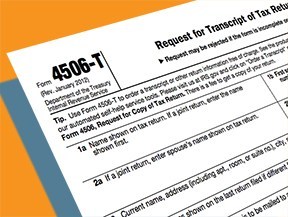What is a 4506?
Form 4506 is a document sent out by the Internal Revenue Service (IRS) that allows taxpayers to obtain a copy of their past tax returns. Taxpayers can obtain copies of most tax form types like forms 941, 1040 and 1120. Currently, it costs $50 per copy to obtain these forms from the Internal Revenue Service. The IRS keeps up to seven years of tax returns on file before destroying them, so there will normally be at least seven years of returns available.
This type of form is often used by taxpayers who have lost their old returns or who are filing for a mortgage. Some companies, banks or mortgage lenders require previous tax forms to make lending decisions. When older returns are needed, form 4506 is the way to obtain them. Once the taxpayer signs and dates the document, they just have to list any third party that they want to retrieve the information.
How Long Does It Take?
Although it can take up to 48 hours for the Internal Revenue Service to process the forms, the transcripts are often received within the first day. If a vendor offers an eight hour turnaround time or less, be wary. In general, it takes the IRS up to two days to complete the request. If the individual requests forms directly from the IRS instead of a third-party vendor, it can take 10 to 60 days for the forms to be sent out and received.
Which Forms Are Available?When using the Form 4506, taxpayers can get photocopies of their original tax returns. They may be able to access their W-2 form, 1099 transcript, 1040 form or 1065 form.
What Happens When an Extension Is Filed?
On occasion, taxpayers file extensions to get more time to pay their taxes and get their files in order. Once an extension has been filed, it takes several weeks for the IRS to update the tax return within their database. Normally, the information is updated within six to eight weeks with any corrections.
What Happens If the IRS Rejects Form 4506?
There are times when the Internal Revenue Service will not process Form 4506. The most common reason for a rejection is that the taxpayer’s current address does not match the address that is on the requested form. To prevent this from happening, it is important to include previous addresses on the fourth line of the form. If the address is not an issue, the other reason for a rejection is due to an illegible signature. Writing clearly and legibly prevents this from happening. If there is a problem with the form, the Internal Revenue Service will let the taxpayer know. Afterward, the form can be updated and filed again.
